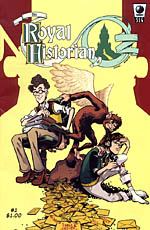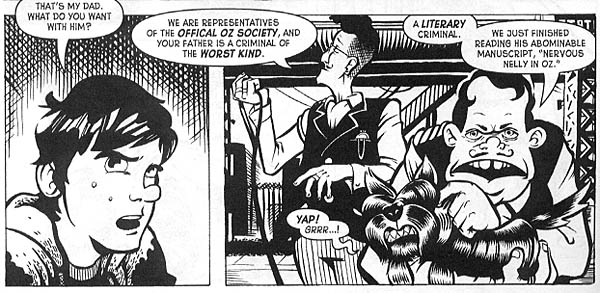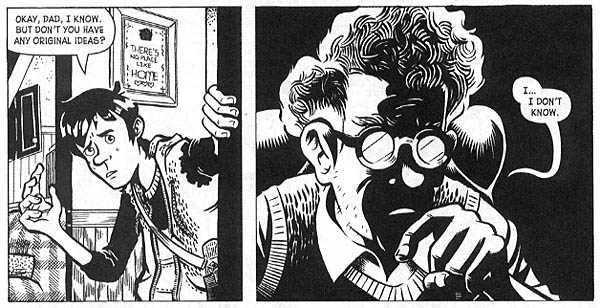 Written by Tommy Kovac
Written by Tommy Kovac
Art by Andy Hirsch
24 pages, black and white
Published by SLG Publishing
One of the things I find fascinating about L. Frank Baum’s Oz series is the number of writers and interpretations that have come to it over the years. It’s a practice that began in the 1920s when Ruth Plumly Thompson was chosen to write books in the series after Baum’s death, and from there not only did additional writers take over the series, but as Baum’s books fell into the public domain it opened up the doors to even more writers to try their hand at Oz. All of this is kept in mind with Tommy Kovac and Andy Hirsch’s new mini-series The Royal Historian of Oz, which has its own take on the idea of various writers trying to take over the job of writing about Oz, and in doing so has something to say about the nature of writing.
Kovac pushes his story sometime after the year 2050, giving him a chance to change copyright laws so that a group called the Official Oz Society has been able to revive the rights to Oz out of the public domain and control who does and doesn’t write about Baum’s creation. At the same time, Frank Fizzle is being perpetually put upon by his father Jasper’s attempts to write Oz novels, ones that the Official Oz Society denounces and threatens to sue him over. What’s interesting is that it’s a struggle that I think could have supported its own entire story, but in The Royal Historian of Oz it’s just a small piece of a larger story, the springboard for the rest of the mini-series. With fights between fan-fiction writers and the owners of those characters, it’s a situation that contains a lot of echoes of real life and the battles over control of intellectual ideas.

But then, at the halfway point of the first issue, once Kovac introduces Oz as a real place and not just a literary fiction the story turns on its head. All of Kovac’s ideas are still there, but now it has to do with Jasper not just taking things from a writing perspective, but from a physical, real place. It’s fun to watch Kovac’s concepts grow, even as fantastical elements enter what could have been a small-scale story. Most importantly in all of this, though, Kovac makes both Jasper and Frank likable characters. It would have been easy to have one or the other thrust firmly into the "bad guy" role, but that’s not the case here. Kovac brings Jasper’s yearning to bring the joy and wonder of Oz to everyone, even while Frank’s head is rooted in reality, both on the quality of his father’s writing as well as just trying to survive in his day’s society while bills and legal notices pile up.
Andy Hirsch draws The Royal Historian of Oz, in a style that reminds me strangely of some early Peter Bagge comics. There’s something about the curves in his character’s faces, and the thick folds of ink on a little dog that just brings Bagge’s art to mind, but not ever in an imitator or copying fashion. The other thing about Hirsch’s art that struck me quickly was his usage of physical form to show off the emotion in Kovac’s script. From a pair of hunched shoulders, to the worried expression on Frank’s face, Hirsch has a good grasp of body language and how it can be used to accentuate a story.

I’m a tiny bit sad that The Royal Historian of Oz is only a five-issue mini-series, because Kovac and Hirsch have created a world that theoretically has endless possibilities. At the same time, though, it’ll be fun getting to the conclusion of what they’ve dreamed up, based on this first issue. This is a comic that sneaks up on you and rewards those who stop and think about what the pair of creators is trying to say. You don’t have to be an Oz fan to enjoy this comic (although it couldn’t hurt). In many ways, with the struggles of ownership being questioned more and more, this is a comic for our times.
